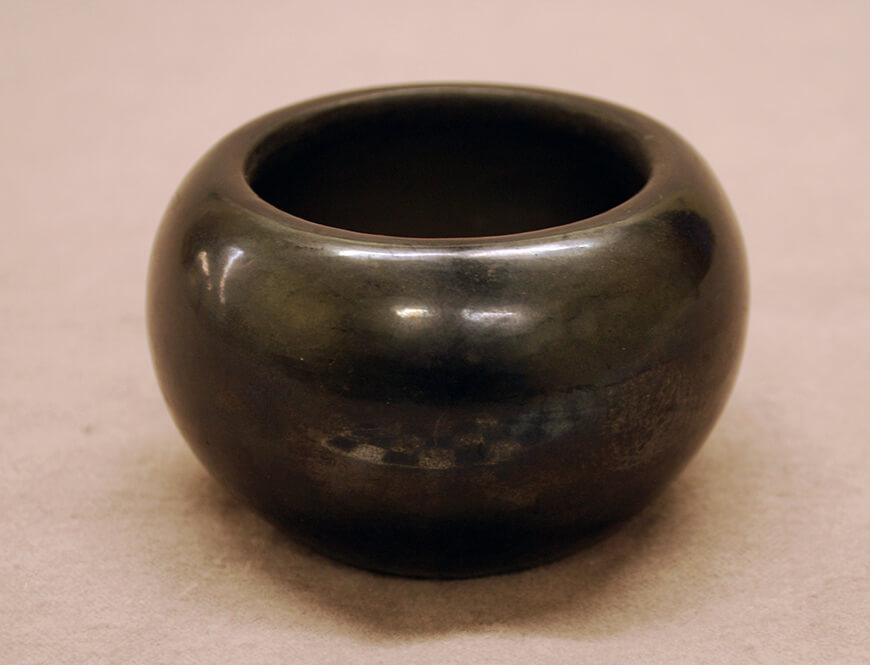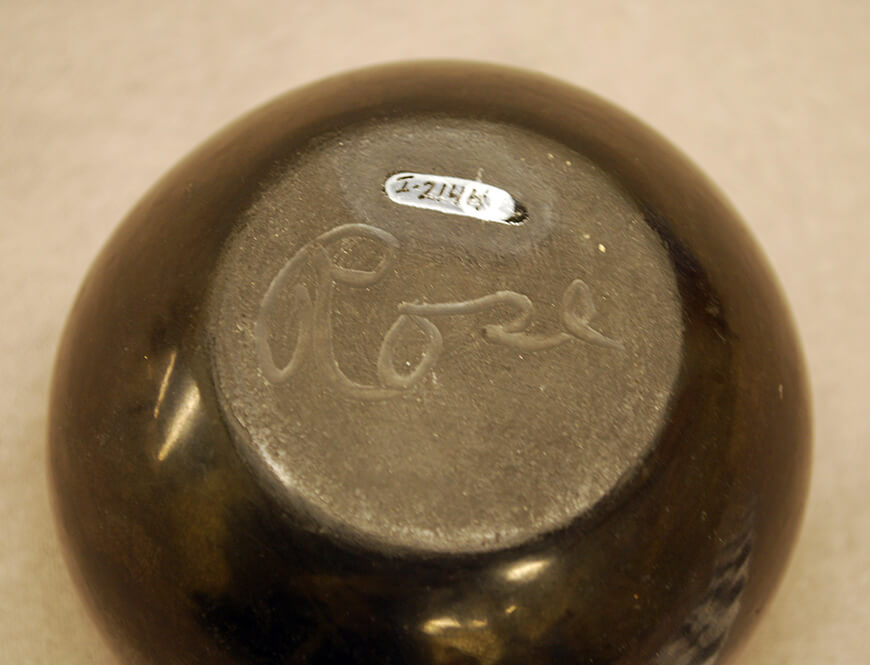This small ceramic bowl is in the style of the Po-woh-ge-oweenge pueblo tribe (aka. San Ildefonso Pueblo), and Ohkay Owingeh pueblo tribe (aka. San Juan Pueblo). Po-woh-go-oweenge means “Where the water cuts through,” and Ohkay Owingeh means “Place of the strong people” in the tribes’ native Tewa language. The bottom of the bowl is signed “Rose,” and likely indicates that the bowl was made by Rose Gonzales. Rose Gonzales was born into the Ohkay Owingeh pueblo but was later married to a man from the Po-woh-ge-oweenge pueblo. She is thought to have learned pottery making from her mother-in-law, Ramona Sanchez Gonzales, which influenced the style of her pottery to reflect both San Ildefonso and San Juan designs. Today both tribes are known for their polished red and black pottery. However, the San Ildefonso style has become famous for the black-on-black designs pioneered by Maria Martinez.
Traditional pueblo pottery is not made using a wheel, but is formed using a coil technique. This style of pottery is made by forming long rope-like pieces of clay. These ropes are then coiled around on top of one another to form the basic shape of the vessel. The artist then uses their hands, or various scraping tools, to join the coils together and smooth the surface of the vessel. After the vessel is shaped it can be decorated in a number of different styles, depending on the artist’s preferences or tribal background. Some of the more popular pueblo pottery decorations include painted slip designs, carved designs, and burnishing. After decorating, the pottery vessels were traditionally fired in an outdoor bonfire-style kiln.

